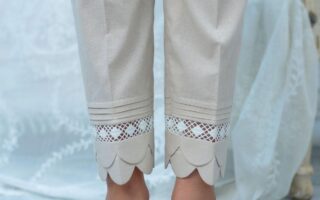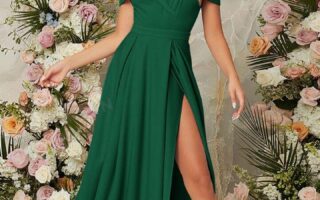The 19th century was a time of profound transformation, not only in societal norms and political landscapes but also in the very fabric of daily life. At the heart of this era lay the intricate and expressive realm of women’s clothing—a vivid tapestry woven from strands of identity, progress, and cultural shifts. From the ruffled skirts of the early Victorian period to the more liberated silhouettes that emerged in the latter years, women’s fashion reflected the changing roles, aspirations, and constraints faced by women. This article delves into the evolution of women’s clothing throughout the 19th century, illuminating how garments were both a reflection of and a response to the dynamic societal changes of the time, offering insight into the intricate relationship between fashion and the women’s rights movement, as well as the broader currents of change that shaped the modern world. Join us as we explore the fascinating details and meanings embedded in the clothing that adorned women during this pivotal century.
Table of Contents
- Exploring the Evolution of Feminine Silhouettes in the 19th Century
- Fabric Choices and Textile Innovations Shaping Womens Fashion
- Accessorizing the Era: The Role of Jewelry and Headwear
- Practical Guidance for Recreating Historical 19th Century Outfits
- Q&A
- In Retrospect
Exploring the Evolution of Feminine Silhouettes in the 19th Century
The 19th century witnessed a fascinating transformation in women’s clothing, as silhouettes evolved in tandem with societal changes. During the early part of the century, empire waistlines were in vogue, accentuating a high waist just under the bust, which symbolized both elegance and femininity. This era saw the use of light, flowing fabrics, such as muslin, which not only offered comfort but also allowed for a graceful movement that echoed the romantic ideals of the time. The introduction of lace and delicate embroidery further enhanced the allure of these garments, making them captivating pieces reflecting the fashionable sensibilities of women who valued both style and modesty.
As the century progressed, the Victorian era brought significant shifts, with skirts growing increasingly fuller due to innovations like crinolines and petticoats. This dramatic change led to a silhouette that celebrated the hourglass figure, emphasizing a narrow waist paired with voluminous skirts. The use of corsets became prevalent, creating a sharply defined waist and altering natural body shapes, which sparked discussions on the implications of beauty standards. The later part of the century saw a gradual loosening of restrictions, culminating in more tailored styles that catered to practicality while still adhering to contemporary aesthetics.
Fabric Choices and Textile Innovations Shaping Womens Fashion
The 19th century was a period of remarkable transformation in women’s clothing, with fabric choices reflecting both societal shifts and advances in textile technology. Cotton, for example, emerged as a favored fabric due to the Industrial Revolution’s mechanization of the cotton production process, making it widely accessible and affordable. This led to the creation of intricate printed fabrics, such as chintz and calico, which were highly sought after for their vibrant colors and patterns. Additionally, the innovative use of silk and wool allowed for the design of luxurious yet practical garments. The introduction of new dyeing techniques also enhanced the visual appeal of these textiles, paving the way for more fashionable and diverse ensembles.
Moreover, advancements in production techniques revolutionized garment construction. The advent of sewing machines in the mid-19th century not only increased the speed of production but also opened the door to more intricate designs and tailoring. This led to the popularization of specific styles, such as the crinoline and later the bustle, which shaped women’s silhouettes dramatically. To illustrate this evolution, the following table showcases notable textile innovations of the time:
| Fabric | Innovation/Feature |
|---|---|
| Cotton | Mass production and printed patterns |
| Silk | Luxury with natural sheen |
| Wool | Versatility for year-round garments |
| Linen | Breathable fabric for summer wear |
Accessorizing the Era: The Role of Jewelry and Headwear
The 19th century marked a profound evolution in women’s fashion, where jewelry and headwear became essential components of a woman’s ensemble. A range of materials such as gold, silver, and pearl was used to create exquisite pieces that not only complemented the attire but also expressed social status and personal style. Accessories were often layered, allowing women to express their individuality through intricate brooches, delicate necklaces, and elaborate earrings. The use of cameos and lockets was especially popular, serving as sentimental keepsakes as well as decorative items.
Headwear during this period also played a crucial role in completing a woman’s look, with styles varying from bonnets to tall hats. These pieces were often adorned with ribbons, feathers, and flowers, reflecting the prevailing fashion trends. To illustrate the diversity of styles found in headwear, consider the following table showcasing various categories of hats popular in the 19th century:
| Type of Headwear | Description |
|---|---|
| Bonnet | Soft, full-coverage style worn primarily by women, often tied under the chin. |
| Top Hat | A tall, cylindrical hat that became fashionable in urban society. |
| Wide-brim Hat | Featuring an expansive brim, these hats provided shade and were decorated lavishly. |
Practical Guidance for Recreating Historical 19th Century Outfits
Recreating 19th-century women’s outfits can be an inspiring journey into the past, and it requires careful attention to detail. Start by selecting a specific decade, as styles varied significantly from the early to late 1800s. Consider materials that reflect the period, such as cotton, wool, or silk. When choosing colors, consult resources on period-appropriate palettes, typically seen in botanical prints, pastels, or darker hues for evening wear. Pay special attention toAccessorizing is key; incorporate items like lace collars, gloves, bonnets, and period-appropriate footwear to complete the look.
To help with the construction process, consider referring to historical patterns or creating your own. Use a variety of techniques including drafting, draping, or utilizing a sewing machine if available. It’s important to note the following practical aspects:
| Element | Tips |
|---|---|
| Fabric | Choose natural fibers for authenticity |
| Silhouettes | Focus on the hourglass figure; use corsets if desired |
| Finishing Touches | Hand-finish hems and add trimmings like ribbons |
With these guidelines, you can effectively recreate a beautiful, historically accurate 19th-century outfit that showcases the elegance of the era.
Q&A
Q&A on 19th Century Women’s Clothing
Q1: What characterized women’s clothing in the 19th century?
A1: The 19th century was a period of remarkable change in women’s fashion, marked by dramatic shifts in silhouette, fabric, and styles. Early in the century, clothing often featured empire waistlines, flowing fabrics, and lighter colors, while the mid-century introduced the fuller skirts supported by crinolines and petticoats. By the end of the century, the hourglass silhouette became popular with the use of bustles and corsets that emphasized the waist, showcasing both femininity and the social standards of the time.
Q2: What were some common materials used in women’s clothing during this era?
A2: Women’s clothing in the 19th century was made from a variety of materials, varying by class and occasion. Cotton and linen were commonly used for everyday wear and summer garments, while silk, velvet, and satin became popular for more formal attire. Additionally, the introduction of wool and the advent of the Industrial Revolution made fabrics more accessible, allowing for more intricate designs and greater variety in patterns and colors.
Q3: How did the social status of women influence their clothing choices?
A3: Social status played a significant role in 19th-century women’s clothing. Upper-class women wore garments that were opulent and richly decorated, often requiring assistance to don the elaborate outfits. Fashion for wealthy women showcased the latest trends, while working-class women focused on practicality and durability. As industrialization progressed, ready-to-wear fashion began to emerge, bringing styles within reach of a broader audience, though with variations in quality and adornment according to affordability.
Q4: What role did corsets play in women’s fashion?
A4: Corsets were integral to creating the idealized feminine silhouette of the 19th century. Designed to support the bust and narrow the waist, they were often laced tightly to achieve the desired hourglass shape. The use of corsets sparked debate about women’s health and freedom, as many women suffered from discomfort and health issues due to constriction. Nonetheless, they were symbols of femininity and societal expectations, deeply embedded in the fashion of the time.
Q5: Can you describe the evolution of dresses throughout the century?
A5: The evolution of dresses throughout the 19th century reflects changing social norms and fashion trends. In the early 1800s, empire waists were popular, characterized by high waistlines just under the bust. As the century progressed, dresses became fuller, with the introduction of crinolines and later bustles in the mid to late 1800s, which created an exaggerated silhouette. Fabrics became lighter and more diverse, leading to dramatic evening gowns and intricate day dresses. By the century’s end, practicality began to influence designs, merging comfort with the elaborate fashions of the day.
Q6: Were there any significant fashion icons or influencers during this time?
A6: While the concept of fashion influencers as we know them today did not exist, several public figures played pivotal roles in shaping 19th-century fashion. Queen Victoria was one such influencer; her personal style and wedding dress had a lasting impact on bridal fashion. Additionally, prominent actresses and artists of the time often set trends that trickled down to the general populace, dictating styles that the public would adopt.
Q7: How did the clothing of the 19th century reflect the feminist movement?
A7: As the 19th century progressed, the emergence of the feminist movement began to influence women’s clothing. Activists argued for more practical and comfortable garments, challenging the restrictive nature of corsets and heavy skirts. The latter part of the century saw the rise of the “New Woman,” who embraced a style that allowed for greater mobility and independence, thereby laying the groundwork for shifts in fashion that would carry into the 20th century.
Q8: What lasting impacts did 19th-century clothing have on modern fashion?
A8: The clothing styles of the 19th century laid the foundation for numerous modern fashion elements. The emphasis on tailored clothing, the blurring of gender lines in fashion, and the use of technology in textile production all can trace their roots to this period. Additionally, the legacy of corsetry and structured garments influences contemporary fashion debates surrounding body image, gender identity, and self-expression, proving that the styles of the 19th century still resonate today.
In Retrospect
As we close the chapter on 19th century women’s clothing, we reflect on a time marked by both transformation and tradition. Each garment—whether a billowing skirt, a corseted bodice, or a delicate shawl—tells a story of the women who wore them, echoing their dreams, struggles, and societal roles. These intricate designs, shaped by the currents of fashion, culture, and innovation, not only defined an era but also laid the groundwork for the style revolutions that followed.
In revisiting this rich tapestry of fabric and form, we gain insight into the complexities of women’s lives in a period of profound change. From the restrictive silhouettes that symbolized societal constraints to the more liberated styles that emerged towards the century’s end, 19th century clothing serves as a mirror reflecting the evolving identity of women.
As we walk away from this exploration, let us carry with us an appreciation for how clothing can encapsulate the spirit of its time and how the threads of history are woven into the fabric of our present. In understanding the past, we not only honor those who paved the way for future generations but also enrich our own narratives in the colorful tapestry of human experience.



